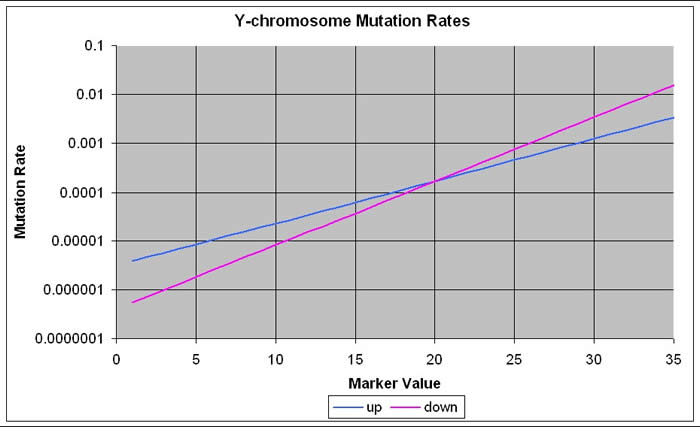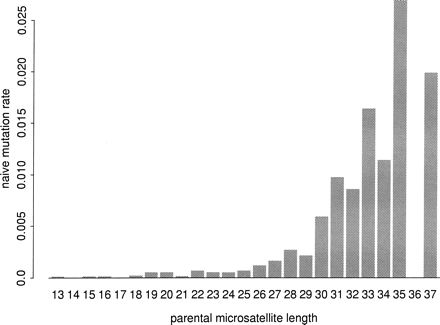Variation in Mutation Rates of YDNA Markers
To have a better appreciation of the uncertainties associated with mutation of YDNA markers, consider the following:
Whittaker, John C., Roger M. Harbord, Nicola Boxall, Ian Mackay, Gary Dawson, and Richard M. Sibly. "Likelihood-Based Estimation of Microsatellite Mutation Rates," Genetics, Vol. 164, 781-787, June 2003, Copyright © 2003. [click here for full text]
This shows the mutation rate versus Y-marker value (i.e., allele length). The study found that markers with longer allele-length have considerably greater chance of mutation than do markers of shorter allele-length. [This makes sense, of course, as a longer-length marker has more nucleic-acid bases and so a greater opportunity to mutate.] But the vertical scale is logarithmic -- doubling the marker length doesn't just double the mutation rate, but rather increases mutation about 10-fold! Here's another way of viewing the effect:
Length dependence of naive mutation rate, per haplotype per generation.
Length is measured in number of repeats.
The other interesting finding is that the rate of mutations causing decrease in marker value is considerably greater than the rate of mutations causing an increase in marker value. Translation: It's more common for a marker to, say, change from a value of 15 to 14, than to change from a value of 15 to 16. This is apparent from the following histogram:
Classification of the 53 naive mutations by step size (measured in
numbers of repeats) and direction.


